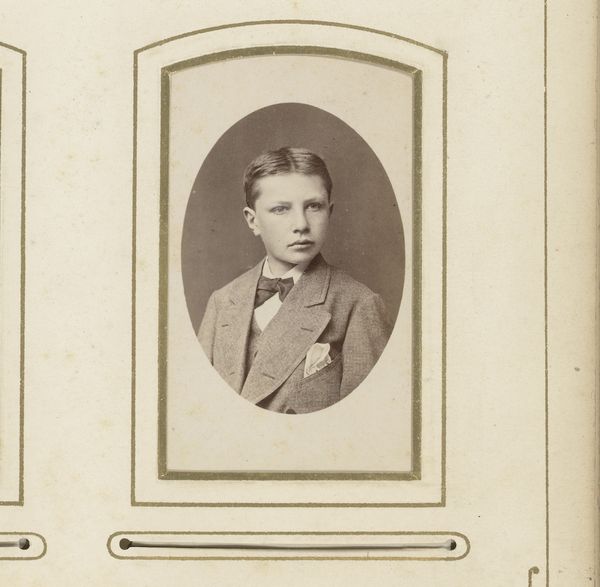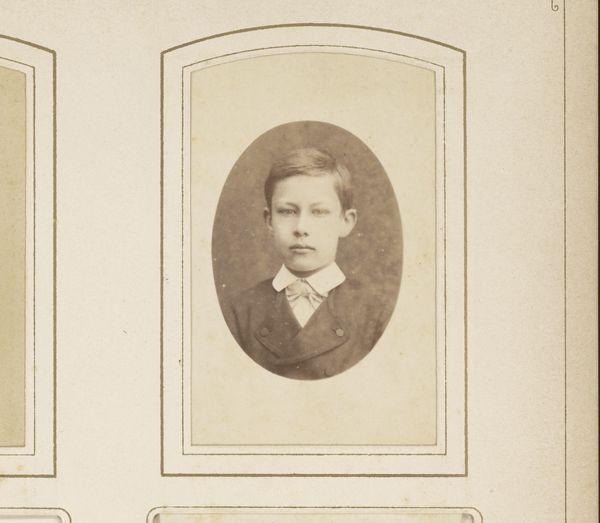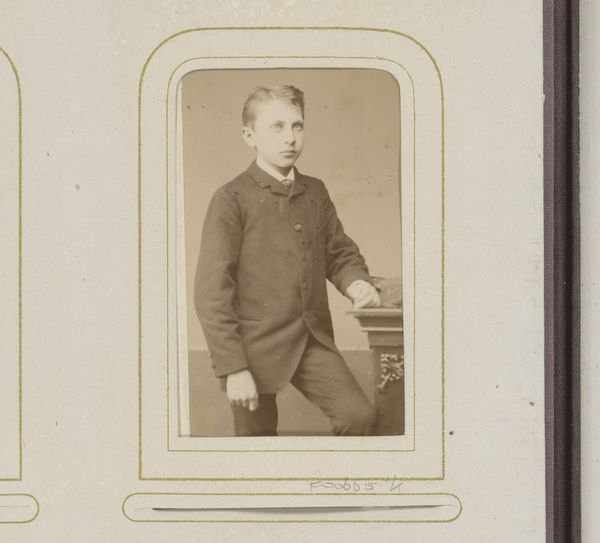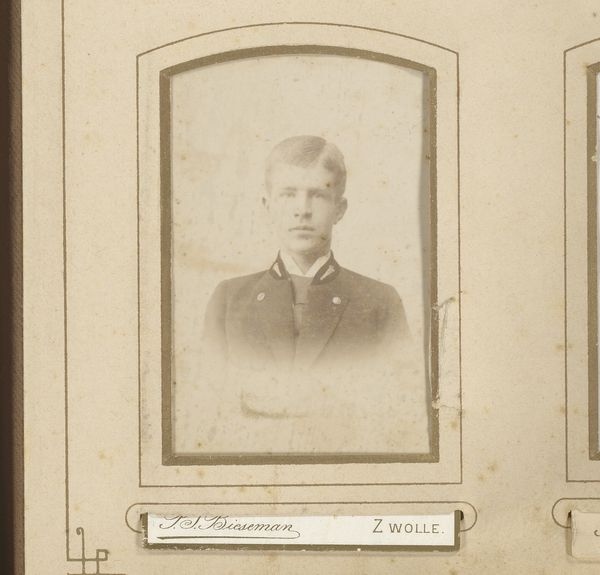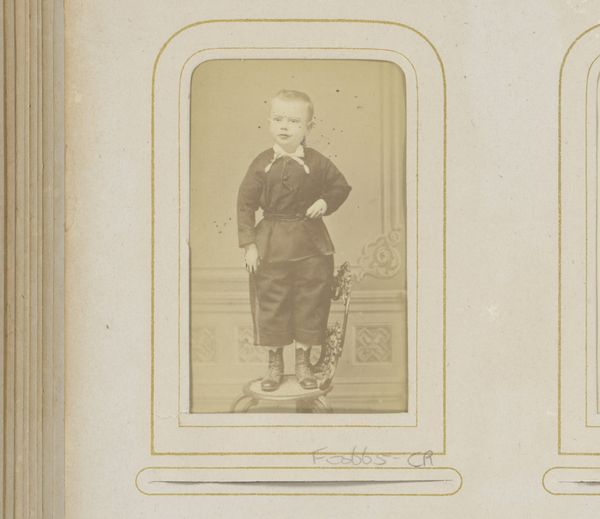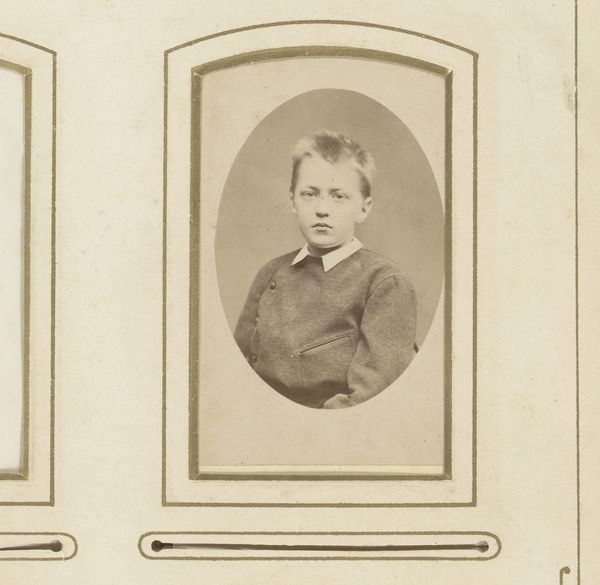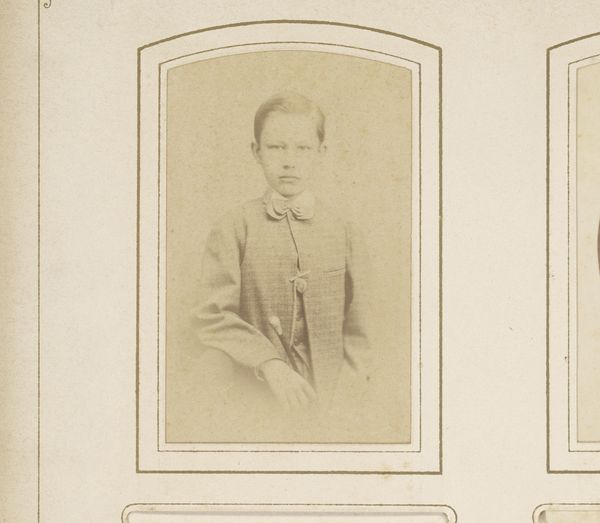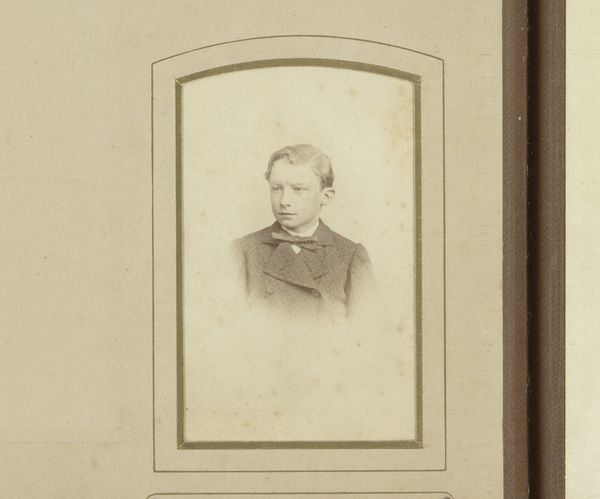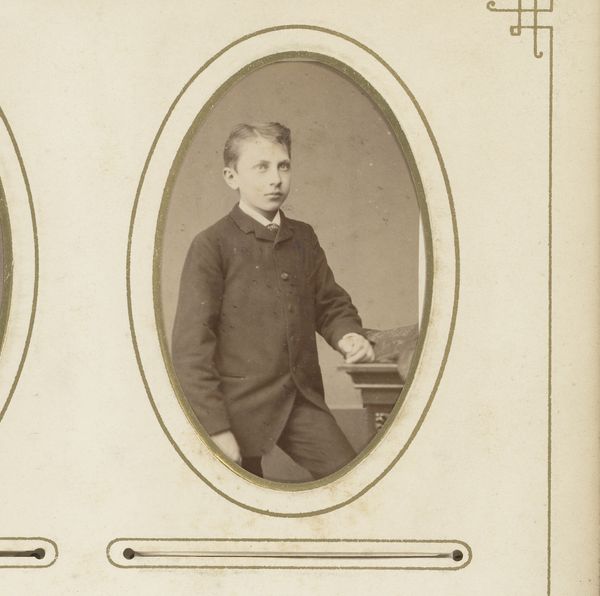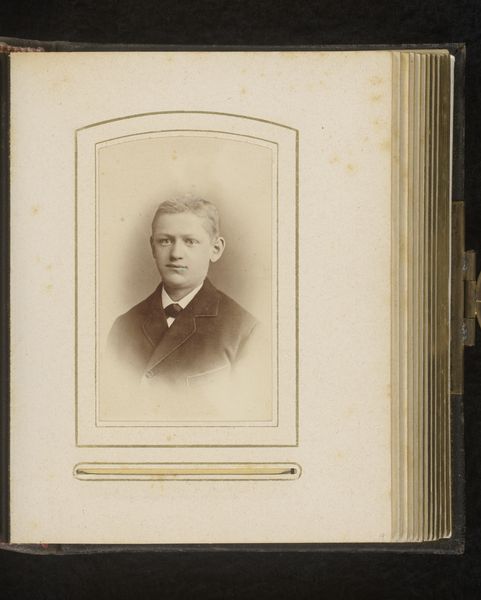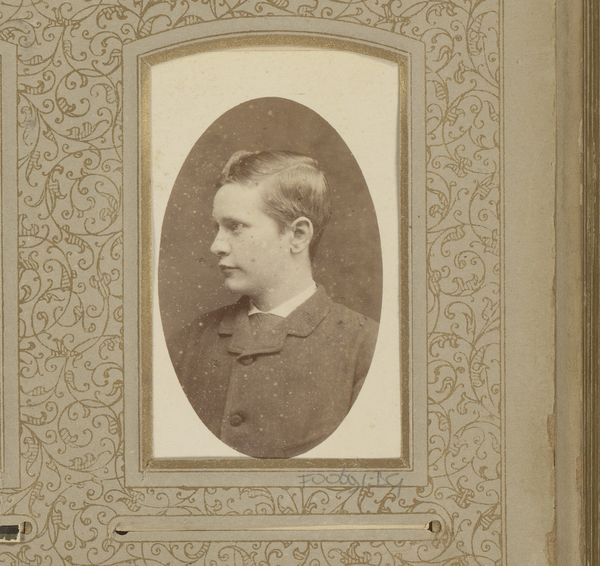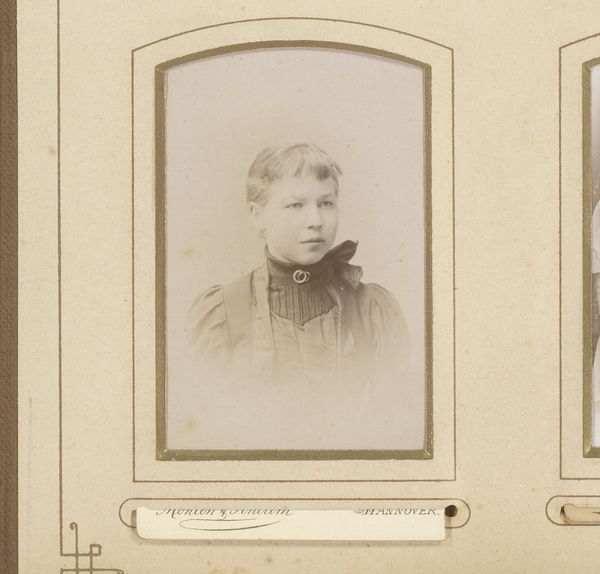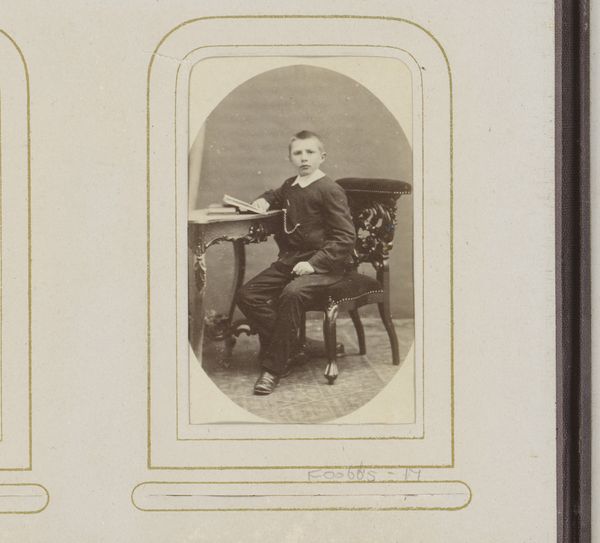
photography, albumen-print
#
portrait
#
toned paper
#
charcoal drawing
#
photography
#
historical photography
#
albumen-print
#
realism
Dimensions: height 82 mm, width 50 mm
Copyright: Rijks Museum: Open Domain
Curator: Before us, we have Hendrik Anthonie Karel Ringler's "Portret van een jongen," an albumen print likely created between 1872 and 1879. Editor: What strikes me immediately is the almost stark simplicity, even somberness, conveyed through the tight composition and muted sepia tones. Curator: Precisely. Ringler uses the albumen print process to its full advantage here. The oval frame within the photograph subtly directs the viewer's eye, highlighting the precise detailing around the young boy's face and clothing. Note the sharp contrast defining the edges and delineating his features. Editor: It's more than just technical skill; I find it hard to ignore how portraits such as these often functioned. In that era, photography had significant value in capturing the likeness of an individual. Did portraiture of younger folks also carry symbolic messaging in middle-class Dutch communities? Curator: Interesting question. Looking at it from the framework, you suggest we ponder socio-economic conditions and even power structures from that period. Editor: Beyond documentation of the social status and aesthetic appeal in the sitter’s milieu? Portraits helped shape self-perception, public identities, and notions of social belonging, too. Curator: Indeed. Consider the Realism style prevalent here—the avoidance of idealization contributes to this stark sense of realism. It brings focus to the sitter’s internal world, capturing emotion truthfully and directly, thus achieving visual and affective resonance. Editor: Exactly, yet the tones, lighting and overall visual grammar work at some levels to express that realism with a touch of wistfulness. Curator: That combination of realistic presentation with an emotionally charged undercurrent surely underscores photography's enduring significance for individual expression in 19th-century Holland. Editor: This has opened a new lane to reflect on photography and cultural interpretation of images through art from ages gone by.
Comments
No comments
Be the first to comment and join the conversation on the ultimate creative platform.
